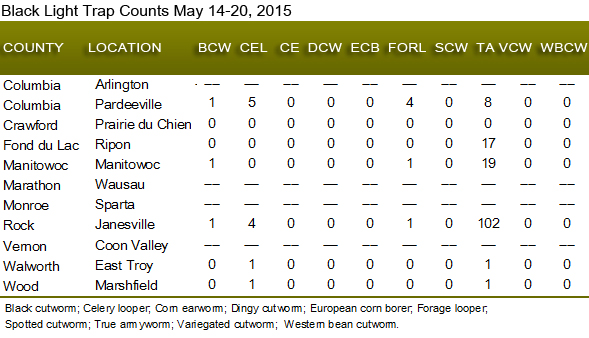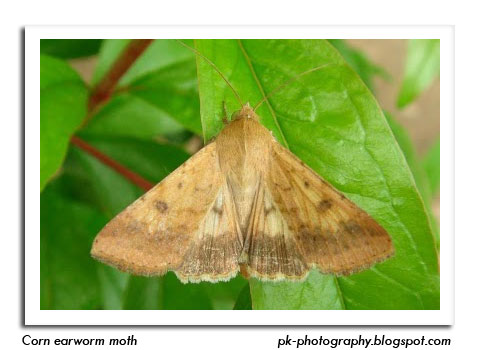
 |
|
|
Corn
Volume 60 Number 5 Date 05/21/2015 BLACK CUTWORM - Larvae from migrants that arrived in late April are mostly in the second and third instars, and are expected to grow large enough to begin cutting corn plants by May 27. Another flight of 51 moths was documented during the May 14-20 reporting period, signaling that oviposition should intensify as soon as nightly temperatures are conducive to moth activity. Compared to recent years, field conditions this spring are less favorable for outbreaks since tillage is nearly complete statewide and more than 85% of the corn crop has been planted. Fields that have been tilled and planted at the time of black cutworm arrival are generally less attractive as oviposition sites. Further, the annual migration that started on April 1 has to date yielded just 272 moths in 43 traps, or an average of six per trap. This count is substantially lower than the 813 moths that had been collected by this time last year and indicates a lower risk for localized outbreaks this season. EUROPEAN CORN BORER - The degree day model for this insect suggests the first flight is under way and egg deposition is beginning in areas of the state where 450 heat units (modified base 50°F) have accumulated, including Beloit and La Crosse. Temperatures have been too cold for moth flight, thus individuals are not yet appearing in black light trap collections. The spring flight is expected to accelerate in the week ahead. TRUE ARMYWORM - Substantial flights of 269 and 102 moths have been registered at the Janesville black light trap location in the last two weeks, indicating a potential for larval infestations in small grains and corn early next month. Reduced tillage corn following sod or a small grains cover crop, and fields with early-season grassy weed pressure are candidates for armyworm problems. Damage usually appears first in the marginal rows of fields, where the larvae enter when moving from another food source. CORN EARWORM - A few early migrants arrived on southerly winds in the last week, as evidenced by the capture of three moths in the Janesville pheromone trap on the night of May 17. These very early moths pose no threat to emerging corn. -- Krista Hamilton, DATCP Entomologist 





|
|
|